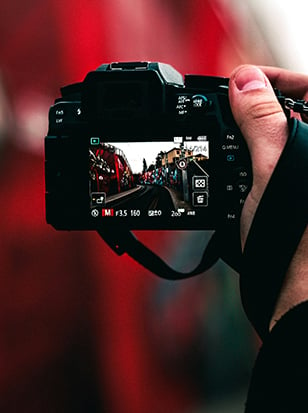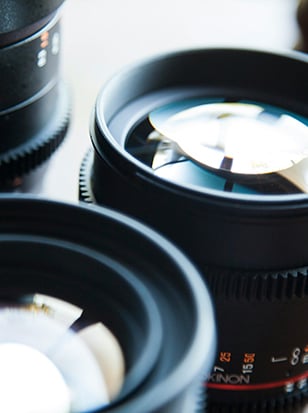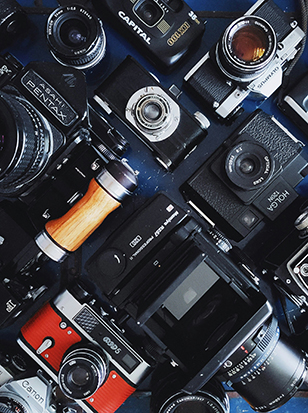Zoologist and camera assistant Tania Esteban draws on her experience and provides 11 top tips for the budding wildlife filmmaker...
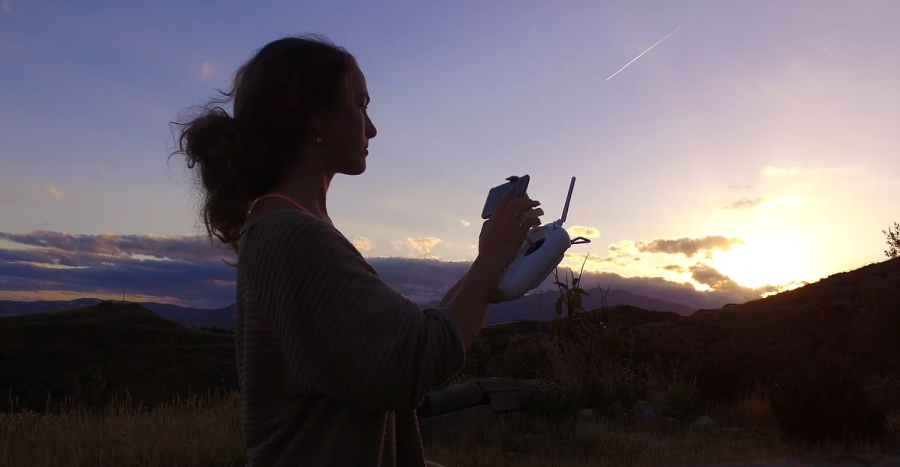
Imagery courtesy of Tania Esteban. To visit her website, click HERE.
I have always been hugely passionate about the natural world and found it fascinating. I grew up watching Sir David Attenborough’s incredible wildlife documentaries on the BBC and have wanted to become a wildlife filmmaker ever since I was 11. Having pursued a degree in zoology and a master’s in Wildlife Filmmaking, I now work as a series researcher and freelance camera assistant.
Breaking into the industry can be challenging, so here are my top 11 tips for aspiring wildlife filmmakers…
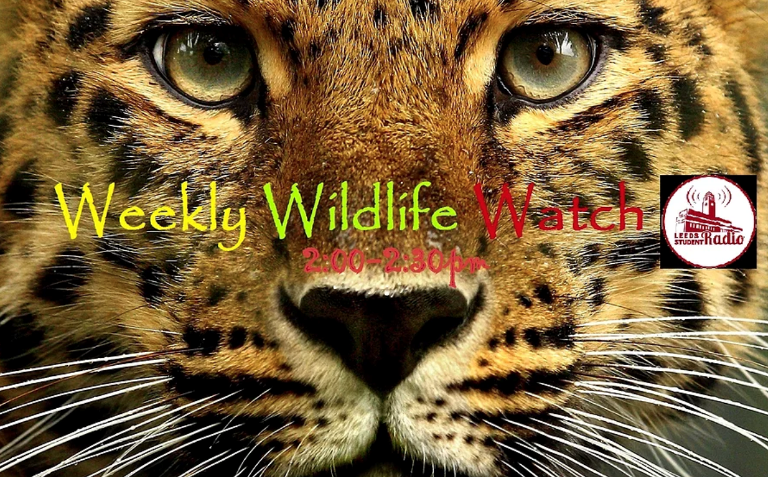
1. Heading to university? Use your time wisely
Having previously lived in southern Spain, I moved to the UK to study a degree in zoology at Leeds University. I also joined television and photography clubs, and Leeds Student Radio society. My projects included a conservation YouTube channel about local biodiversity and two radio programmes, Weekly Wildlife Watch and The Travel Talk Show. These extracurricular activities helped me create a portfolio of content, which would form part of my application for my master’s in Wildlife Filmmaking at Bristol UWE. While radio and TV taught me how to write and focus on storytelling, I joined PhotoSoc which helped me learn the fundamentals of photography.
The degree itself was a fantastic course that gave me a solid grounding and understanding of the complex realities of the natural world. Use your time wisely and make the most of the superb facilities universities provide — attend every non-compulsory lecture you can! You don’t have to go down the traditional science route, but it helps enormously when researching natural history content. Contacting scientists is a huge part of what we do as researchers or APs (assistant producers), and understanding the science and being able to extract stories from complex papers is always a great asset to any team.
In my opinion, zoology is one of the most fascinating courses you can study. From cheetahs to genomes and bacteria to bats; you even get the opportunity to travel and collect faeces — what could be more thrilling?
2. Find a mentor (like Yoda…)
Finding a good mentor to help guide you on your way to becoming a filmmaker is invaluable. But don’t become disillusioned by the enormity of their achievements either. Remember, they probably started their career in a similar way to you. Having someone to help or simply encourage you to find what you truly love doing in this industry can help you go a long way. Treasure them and soak up all of the wisdom and knowledge that comes with years of experience within the industry.
However, don’t rely on your mentor entirely. Gather information via as many avenues as possible. You might find yourself watching YouTube tutorials, trawling mountains of tech blogs and downloading your fiftieth PDF manual as you learn how to research, schedule, shoot, record audio, edit, grade and even distribute your own films. In fact, this might just be the best way to learn. The more self-reliant you become, the better prepared you’ll be for the big bad world of television, where you’re expected to be a jack of all trades. Embrace your own curiosity. Want to explore technology and learn filmic grammar. If you really want to get into the industry you should be living, breathing and sleeping it!
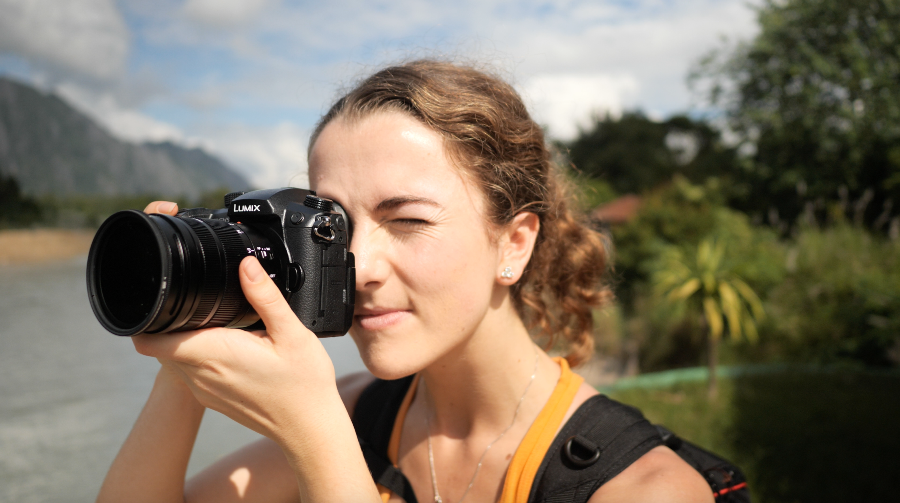
3. Get kit savvy
Technology has revolutionised the way we capture our stories. Even within the past 10 years, advances in consumer and professional filmmaking products are astounding. The shear range of cameras available to film with in the industry is larger than ever before, and the quality of the footage is now very important to the viewer’s experience and enjoyment of the documentary. The right technology can add a more dramatic feel to your film and immerse your audience further. Also, knowing what not to take on shoots can save you time and money. Knowing what’s essential comes with experience, but when you’ve got backache from lugging that extra 20m cable and additional gimbal around all day, you quickly learn what you can do without…
4. Choose your kit wisely
There’s no substitute for skill, knowledge and passion, but choosing the right kit will help you realise your vision. Here’s what I’ve been carrying in my kit bag recently...
LUMIX GH5: I love this camera. It’s dynamic, compact and beautiful. It does everything I need to shoot good stills and even more amazing internal 4K at 60fps (10-bit 4:2:2) footage. Paired with some 128GB V90 SD cards, the GH5 is a dream and so much handier in remote locations when you’re shooting solo. Without the bulk of a larger full-frame camera, I can carry more lenses, a drone and gimbals.
DJI Phantom 4 Pro: It’s my favourite drone; I can’t fault it. It might be a bit pricey and bulkier than some of the newer drones (Mavic Air, Mavic Pro and Spark), but the quality is simply stunning. Five direction obstacle sensing gives me the confidence to fly more safely, and the 4K footage at 50fps is simply fantastic!
Zhiyun Crane 2: I use this so often, it’s literally a third arm. This 3-axis gimbal allows you to replicate the movements of the more expensive DJI Ronin-M or MōVi gimbals using a mirrorless camera system such as the LUMIX GH5 or Sony A7S. You can pan, tilt and roll, and you can adjust the settings using an app and the screws on the gimbal itself. The battery life is insane; it’s lasted during three days of nonstop shooting! The Zhiyun Crane 2 is compact, light and inconspicuous. And it looks like a posh selfie stick…
Sennheiser EW-112P G3: This portable wireless microphone system is sharp, crisp and clean — everything you need in a radio mic. Not only is it incredibly portable, but you’re guaranteed to capture good quality sound. This, paired with the Zoom H5 Digital Audio Recorder, is my sound dream team as I can travel without lugging huge mixers and boom mics around with me.
Appropriate clothing: It’s easy to forget that clothing can be just as important as your technical gear. For example, during a recent shoot in Iceland, my Nordic Life filming gloves made life much more comfortable. Cold temperatures really affect your dexterity, but the merino wool base layer and touch-screen compatibility made drone and camera menu operation a doodle.
iFootage Shark Slider Mini: This is the best slider set I’ve used by far. I can programme (via an app) the 3-axis slider to shoot a specific run through with pan, tilt and slide options. The interlocking tracks mean I can make the slider as long as I want, and it’s so compact I can fit it in my main bag, along with its batteries. Excellent build quality for the price and makes timelapses footage look very high-end.
Panasonic 15mm f/1.7 LEICA Summlix DG ASPH MFT lens: I adore this lens; it’s pin sharp and lightweight, with a really gorgeous shallow depth of field. It’s an ideal companion for timelapses, gimbal work and interviews. I shoot with it a lot, the build quality is exceptional and I can’t get enough of the bokeh.
Manfrotto D1 Drone Backpack: This was my home for the last month I spent in Laos and housed everything I needed: eight batteries, two cameras, three lenses, radio mics, power banks, a remote control, my MacBook Pro, a notepad, and of course, a drone. You name it, it fits. The bag is gorgeously padded too, so when you’re hiking through a forest it doesn’t rub your shoulders. Just make sure you don’t slip backwards...
Tania's short documentary A Lion’s Tale was nominated for a student BAFTA in 2017.
5. Shoot your own films
This might seem obvious, but you’d be surprised at the number of people who tell me they’re into filmmaking, but haven’t actually made any films themselves. I’m often told they’re waiting to break into the industry before they start. No! You have to be a go-getter. Get out and film whatever interests you, but don’t be tempted to do it off the cuff, you’ll end up with a mismatch of random shots and no story.
Think about the story you’re trying to tell: Who is your subject? What journey are they making? What are they trying to achieve? And what challenges will they face? Share your subject’s adventures through your camera. In terms of getting your hands on good kit, prices of decent film cameras are plummeting. Take advantage of this and start shooting! It doesn’t have to be professional, just show that you can put a story together.
Free editing software is also available; I love DaVinci Resolve. Not only is it a powerful editing tool, but it’s an amazing colour grading software. Share your video once it’s edited, get feedback and use that to improve. It’s the only way you’ll learn whether or not you really want to get into this industry.
You don’t necessarily need to go down the camera route — I’m guessing most of you reading this are! There’s a wide range of exciting career paths within the filmmaking industry, from producers and production managers to sound technicians and video editors.
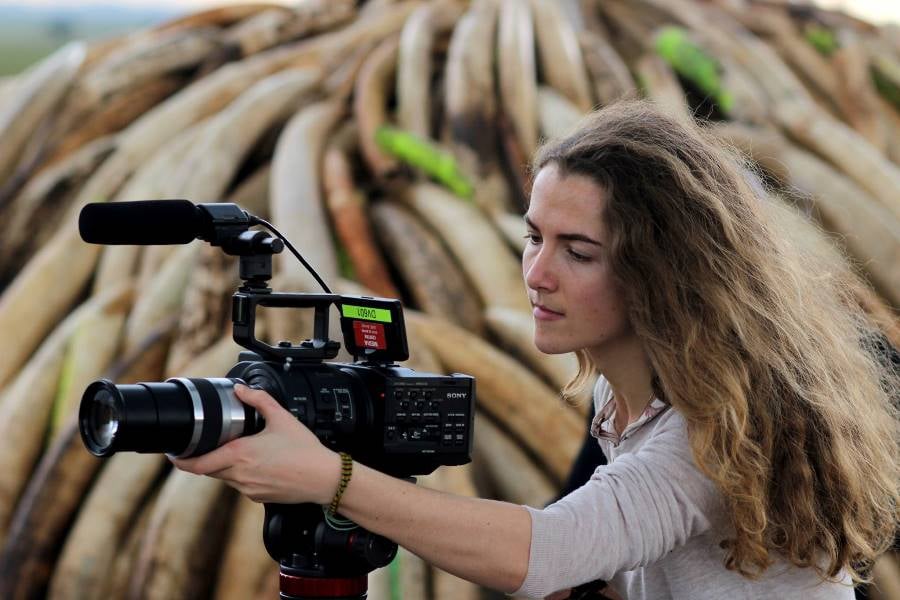
6. Tell stories
Whether we’re researching, filming or colour grading, every decision ultimately feeds back to the powerful premise of storytelling. Technology will always be an innovative tool to help move and engage your audiences, but it should never replace good storytelling.
Some of the biggest productions you see on television are called super-landmark series. Teams spend months in pre-production, researching and planning each story and how they all connect. Comparatively speaking, much more time is spent at this stage of the production process than any other. But, if you don’t like working behind a desk, work towards becoming a freelance camera operator, rather than a researcher.
A good story doesn’t mean you have to reinvent the wheel. The greatest stories out there, no matter what genre, tend to feature similar plots. Research is, of course, critical to fleshing out your story and often you’ll find twists and turns in the plot that will add drama and texture to your film. We’ve been telling stories for thousands of years. From basic yet beautiful cave art to complex and inspiring innovations in virtual reality, we have so many ways in which to tell stories and more are on the way. It’s truly an exciting time to be a filmmaker.
7. Put yourself out there
Conversation leads to collaboration. But networking doesn’t have to be about finding people to work with; you could also meet some of your dearest friends. My advice is to get out there (business card in hand) and share your passion and talents with likeminded people. The worst that can happen is someone declines when you ask for work. In fact, you’ll get rejected a lot. Nobody likes to be rejected, but it’s just part of the industry. Don’t let it get you down though, keep trying. If there’s one thing I’ve learned about being a wildlife filmmaker, it’s persistence. And when you’re given the opportunity, pursue it with gusto!

The homepage of Tania's website.
8. Create an online brand
Having an online presence isn’t essential, but there’s no harm in sharing what you’ve been up to. Lots of people find behind-the-scenes content fascinating. The BBC is a champion at this; you’ll find 10 minutes of behind-the-scenes footage from nearly every mini or super-landmark series — it was always one of my favourite bits and hugely inspired me as a child.
Write about your travels, your failures and your successes. Take some quality photographs of your production and share your experiences with your online audience, so they can follow your journey. Not only will it boost your profile on social media, it’ll be an amazing reminder of the adventures you had at the beginning of an incredibly exciting career. Some people find that writing is how they wish to share their stories in the film and TV industries. Good writing skills are hard to come by, and a producer that can write a heartfelt script will be valued within a production team.
9. Find your niche
This is something I’ve found out recently; carving your niche within the industry is key to your development and branding as a filmmaker. Not only is it hugely rewarding to focus on a particular technique or item of technology when filming, but it’ll greatly enhances your work overall — as you spend more and more time honing your specific craft.
I enjoy gimbal and drone work, but I particularly love long lens work and shooting in high-speed — a specialism of many wildlife filmmakers. My absolute heroes are Sophie Darlington and John Aitchison — both specialise in long lens work (among many other amazing techniques). They are incredibly dedicated to their craft and respect the wildlife they are clearly so passionate about. You can’t help but be in awe of their remarkable devotion and humble nature. I certainly aspire to follow in their footsteps, and hopefully get as good as them in the years to come!
It takes many months and years in the field to even come close to their execution of the technique. Again, whatever you choose to specialise in, practice, practice, practice. It’s also important to watch the work of others for inspiration. There’s no better way to learn than to see how it’s done. Once you’ve mastered the basics, you can then experiment and make things your own. It’s all part of the adventure…
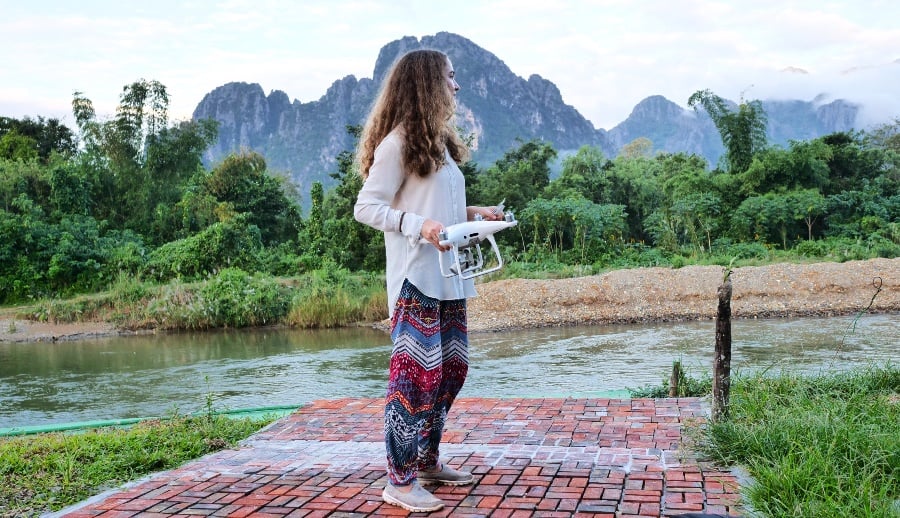
10. Use drones to your advantage
I’ve recently delved into the world of drones. They’ve since become an endless fascination and never cease to amaze me! Many new technologies rapidly fail to make an impact and are seen as little more than a gimmick, but I could instantly recognise the advantages of drone use for aerial cinematography and natural history filmmaking. The ability to capture an entirely different perspective and angle without using a loud (and expensive) helicopter has several perks. You can get closer to wildlife without scaring it and closer to landscape structures with less risk of damage.
The advancements in camera technology and 4K RAW shooting are mind-blowing. Gone are the days of unstabilised, grainy shots. I started to shoot with drones out of curiosity and the want to add another dimension to my filmmaking. I soon found out the sky's the limit. The key to capturing drone footage is to fly slowly and pan the gimbal just as slow. It’s all about steady, controlled movements which resemble a Cineflex shot – keeping an eye on the battery life is also very important. Drone technology will continue to progress in leaps and bounds. You even have tiny drones that can fit in the palm of your hand now!
11. Be passionate
I saved the most important tip for last…
Passion can’t be taught; the joy and energy that you experience when you do what you do best comes from within. Perhaps it’s camerawork, editing or sound design; maybe it’s producing, directing or research. For me, it’s telling stories about the natural world. Stories have the power to inspire a single person, but they also have the potential to influence the way we live in our societies, and can even have a global impact and touch millions of lives around the world.
If my work inspires just one other person to be a more compassionate individual, care about our planet and feel in awe of the beauty and wonder of the natural world, then that makes me very happy indeed.

To finish…
Overall, there is no one route for getting into wildlife filmmaking. Everyone has their own unique skills and talents that illuminate different pathways. If you truly wish to get into this, know that it’s a way of life. You must be willing to dedicate everything you have to it. But most importantly, remember why you started in the first place. Now, get out there and film!
Speaking of which, you'll find the film poster for my next project above. Watch this space.
About the Author
Tania is a freelance researcher, camera assistant and fully licensed CAA drone pilot. She has worked on projects for the BBC and Channel Five, and her short documentary A Lion’s Tale was nominated for a student BAFTA in 2017. To find out more about Tania’s work, visit her website.
Related articles
Behind the Shoot: “A Lion’s Tale” – Wildlife Documentary
Two Weeks with the GH5S: Should You Buy It?
How to Plan Your First Travel Documentary Video
